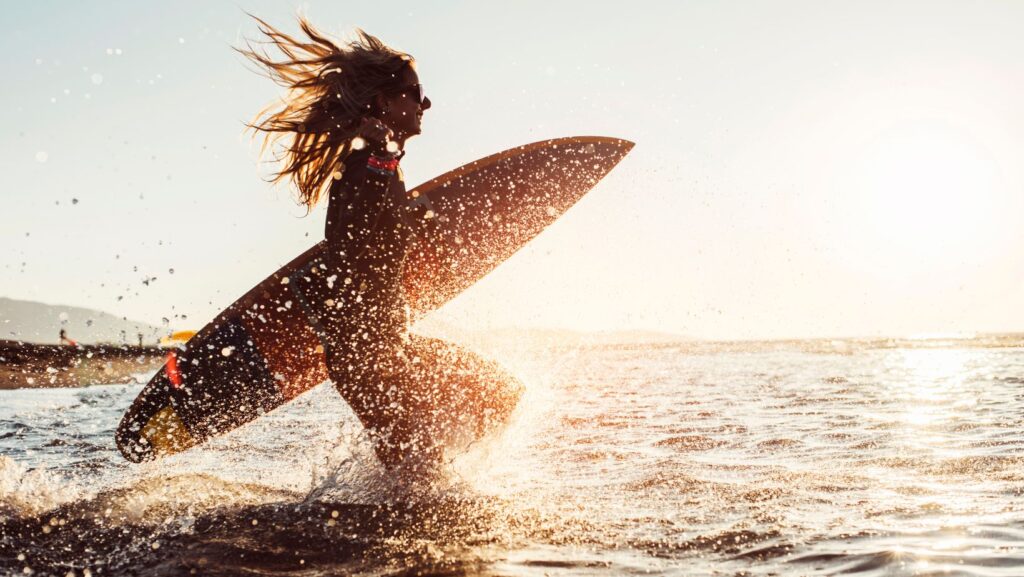
Catching waves and feeling the rush of the ocean beneath a surfboard is an exhilarating experience that draws thousands to coastlines worldwide. However, the thrill of surfing comes with its set of risks, making safety a paramount concern for both novices and seasoned surfers alike. Navigating the waters safely ensures that every surf session ends with good memories and the eagerness to return to the waves.
From understanding the ocean’s temperament to mastering the art of falling, there are essential tips and techniques that surfers must embrace to protect themselves and others. This article dives into the critical aspects of surfing safety, offering valuable insights and practical advice to help surfers of all levels enjoy the sport while minimizing the risks. Whether you’re just starting out or looking to refine your approach to surfing safely, the following sections will guide you through the essentials of making every surf session a safe adventure.
Surf Safely
The desire to chase waves necessitates a foundation of safety to prevent injuries and ensure an enjoyable experience. In the realm of surfing, understanding one’s equipment and adhering to surf etiquette are paramount for safety. These elements equip surfers with the knowledge and behavior needed to navigate the water safely.
Knowing Your Equipment

Selecting the right surfboard and wearing the appropriate gear significantly impact to surf safely. It begins with choosing a surfboard that matches the individual’s skill level, body type, and surfing conditions. For beginners, longboards are typically recommended due to their stability and ease of use. Additionally, ensuring the surfboard is fitted with a safety leash reduces the risk of losing the board and provides a lifeline in strong currents.
Wetsuits and rash guards offer protection against the cold, sunburn, and abrasions. The use of a well-fitting wetsuit designed for the water’s temperature can prevent hypothermia in colder conditions. Meanwhile, helmets, although not universally worn, provide extra protection in areas with shallow reefs or during big wave surfing sessions.
Learning Surf Etiquette
Surf etiquette, a set of unofficial rules and guidelines, fosters a respectful and safe environment among surfers. Key aspects include understanding the right of way, which often goes to the surfer closest to the peak of the wave or the first to paddle for it. Respecting this rule reduces collisions and conflicts in the water.
Maintaining awareness of one’s surroundings is crucial to avoid accidentally dropping in on someone’s wave or getting in the way of other surfers. This vigilance ensures everyone has a fair chance to enjoy the waves and keeps the lineup organized.
Assessing Water Conditions
To surf safely, assessing the water conditions before entering is essential. This process involves a thorough analysis of two critical factors: identifying rip currents and understanding wave patterns. By mastering these aspects, surfers can ensure a safer and more enjoyable experience on the water.
Identifying Rip Currents

Rip currents are powerful, narrow channels of fast-moving water that pose significant risks to even the most experienced surfers. Recognizing these currents before paddling out can be life-saving. Several indicators can help surfers identify rip currents:
- Color variation: Look for areas where the water appears a different color, often darker, indicating deeper water where rip currents may form.
- Disrupted wave patterns: Rip currents often disrupt the incoming wave pattern, creating gaps or areas where waves break less consistently.
- Foam and debris: Watch for lines of foam, seaweed, or debris moving seaward, a clear sign of water being pulled out by a rip current.
Understanding Wave Patterns
Wave patterns significantly influence surfing safety and success. Grasping the intricacies of wave formations allows surfers to position themselves optimally and catch waves more effectively. Key aspects include:
- Wave size and power: Evaluating the size and force of waves helps surfers choose suitable ones for their skill level, reducing the risk of wipeouts and injuries.
- Wave direction: Understanding whether the waves are left-handers (breaking to the left from the surfer’s perspective) or right-handers assists in positioning and maneuvering on the wave.
- Tidal impact: Recognizing how tides affect wave conditions in the surfing spot informs surfers about the best times to surf, ensuring they experience ideal wave shapes and sizes.

